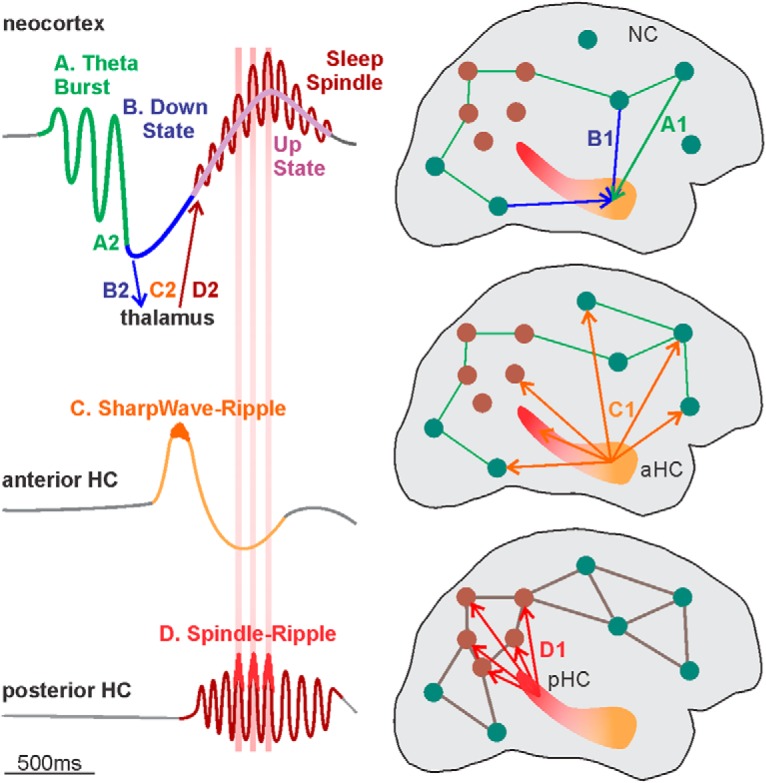Figure 7.

Proposed HC-SWR/SSR interactions with NC-GEs in the context of previous findings of NC-HC-thalamic interactions during GEs (Mak-McCully et al., 2017; Gonzalez et al., 2018; Jiang et al., 2019). A, The sequence begins with a spontaneous NC-TB. Firing patterns are hypothesized to project to the HC and help inform the context in which they arise (A1). Locally, the NC-TB may lead to the NC-DS (A2). B, The NC-DS in turn may contribute to the broadband decrease in HC-LFP preceding SWR (B1) and trigger a thalamic-DS (B2). C, The HC-SWR occurs at this critical juncture (Jiang et al., 2019), contributing recent memory traces to the NC as it reboots from the NC-DS (C1); meanwhile, the thalamic-DS enables the h and T currents to generate a thalamic-SS (C2). D, The pHC-SSR follows, perhaps projecting more detailed recent memory information during multiple ripples (D1). The pHC-SSRs are tightly phase-locked to SS in inferior and medial parietal cortices (present study), projected from the thalamus (D2). Increased firing and Ca2+ influx during the NC-SS and underlying NC-US may provide an ideal cellular environment for memory consolidation. Experimental evidence is lacking for pHC-SSRs serving as markers for replay, and the evidence for aHC-SWRs is mainly from rodents.
